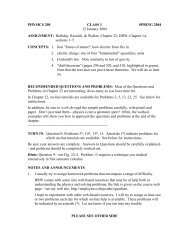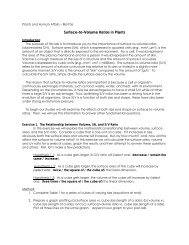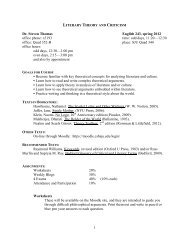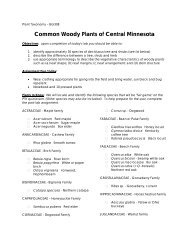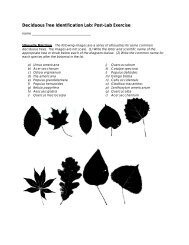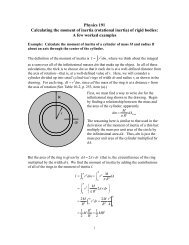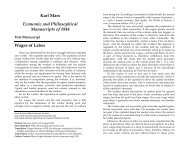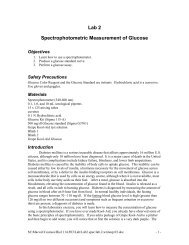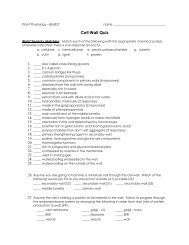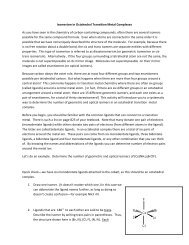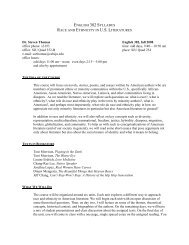Lab 1: The metric system â measurement of length and weight
Lab 1: The metric system â measurement of length and weight
Lab 1: The metric system â measurement of length and weight
Create successful ePaper yourself
Turn your PDF publications into a flip-book with our unique Google optimized e-Paper software.
At this point you may note that the y-axis scale for your graph includes a range wherethere are no data points present. For example the shortest individual in the class was 1.58meters, yet the y-axis starts at zero. To correct this do the following:• Double-click on the y-axis.• On the dialog box that opens click the tab labeled Scale.• Change the minimum value to an appropriate number – in the aboveexample 1.50 meters would be appropriate.• Click OK• You may also have to adjust the scale <strong>of</strong> the x-axis in similar fashion.To add the line <strong>of</strong> best fit (trend line):• Choose Chart from the top menu bar. (Make sure that the graph ishighlighted/selected by box bullets on the perimeter. You can do thisby clicking anywhere on the graph.)• Click Add Trendline.• <strong>The</strong> Linear type <strong>of</strong> trend line should already be selected. This is whatyou need.• To get the R-Square value to print on your graph, click the tab labeledOptions. <strong>The</strong>n check the box titled Display R-Squared Value onChart.• Click OK.Note that R 2 indicates the strength <strong>of</strong> the relationship between the two variables. Values<strong>of</strong> R 2 ranges from 0 to 1.0. As the value <strong>of</strong> R 2 increases, the relationship is gettingstronger, with a value <strong>of</strong> 1.00 indicating a perfect correlation. Conversely, as R 2approaches 0, the correlation is weaker, with a score <strong>of</strong> 0 indicating the absence <strong>of</strong> anylinear relationship between the variables.4. Measurement <strong>of</strong> <strong>weight</strong>Weigh yourself either using a <strong>metric</strong> scale or a English scale. Enter your <strong>weight</strong> inkilograms (1 kg = 2.2 lb.) on the chalkboard or on a chart provided by your lab instructor.5. Descriptive statistics for class <strong>weight</strong>Using the same MS Excel workbook you started earlier, create a new column for <strong>weight</strong><strong>and</strong> enter the class values. Determine the mean, median, <strong>and</strong> st<strong>and</strong>ard deviation for thisvariable. Save your work. Print a copy <strong>of</strong> the Workbook <strong>and</strong> give it in to your instructorat the end <strong>of</strong> class (one copy per group).



